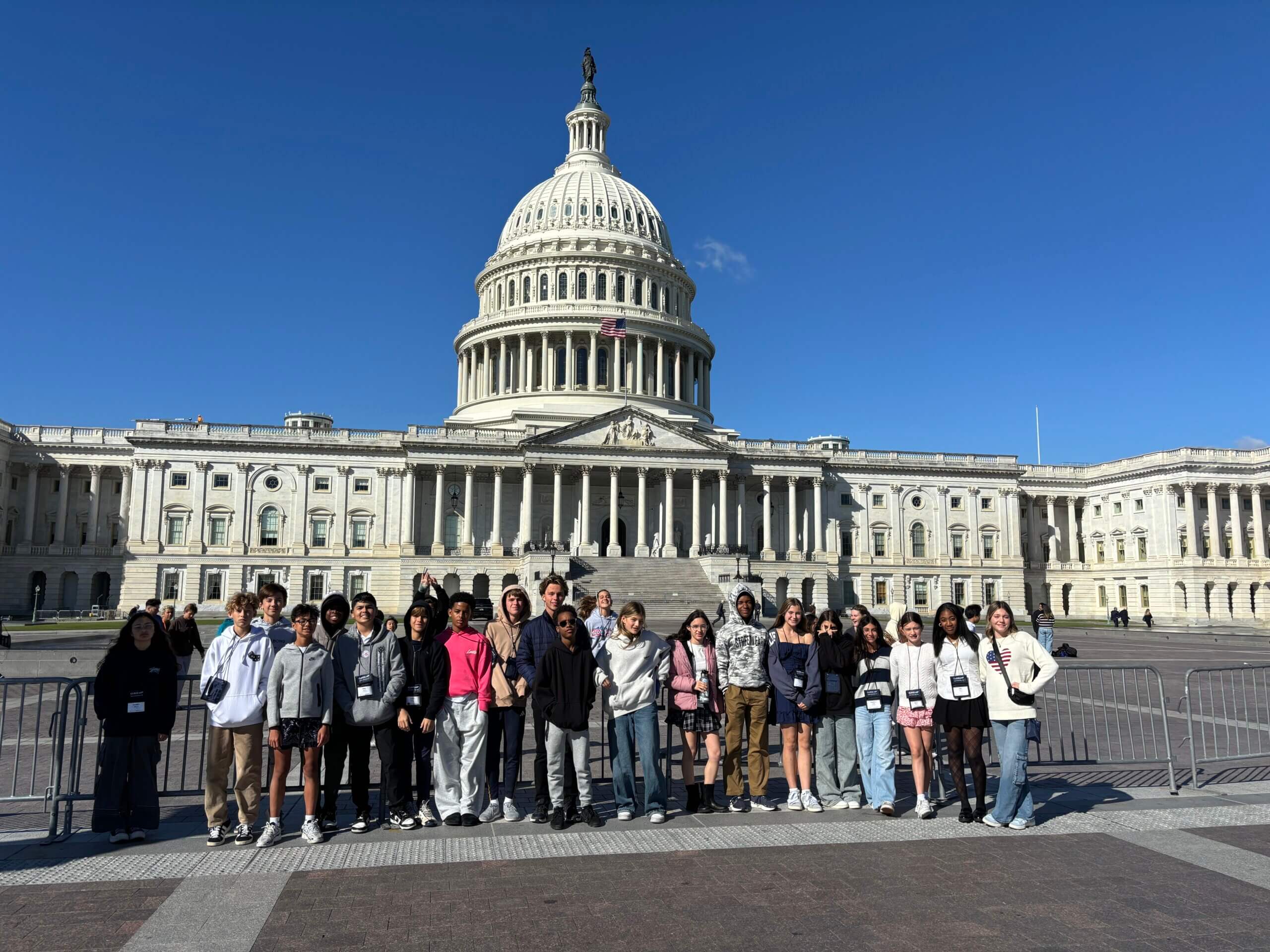Washington D.C. 2024
– Mr. Brannan & the 8th Grade Chaperones
DAY SIX
One peculiar aspect of our hotel stay that our Close Up guides pointed out is the surprisingly unobstructed view of the Pentagon from the Monument Room where we eat breakfast each day. In a city where security measures are as common as politicians, this clear line of sight to one of the nation’s most important military headquarters is somewhat of an anomaly. Most vantage points with such a view have long since been restricted or obscured, yet here we are, able to count the windows on the facade of the Pentagon while chowing down on bacon.
It begs the question: Is hosting school trips a clever government ploy to annoy potential spies? Picture a nefarious agent, setting up sophisticated surveillance equipment, only to have their view consistently photobombed by excited middle schoolers on a field trip, pointing and exclaiming, “Look, it really does have five sides!”
Whether it’s a security strategy or just an oversight, it certainly adds an extra layer of intrigue to our accommodations. One thing we know for sure is that a group of middle school kids (not ours, of course) at their worst would be able to annoy even the most grizzled spy into giving up their mission and abandoning their strategic view just to go find some peace and quiet.
Anyway, on to today, our last in DC . . .
Wake up calls this morning went surprisingly well. So did luggage and room checks. Ms. Reimann even commented that this was the smoothest last morning in the hotel in all her years chaperoning an 8th grade DC trip.
Our first historical stop of the day was Mount Vernon. On the way, one of the buses temporarily lost power, which created a few nervous moments, but the driver was able to troubleshoot it within about ten minutes. The chaperones all crossed their fingers that this would be the biggest hiccup we faced today.
The historic home of George Washington, Mount Vernon, sits on the banks of the Potomac River. This sprawling 500-acre estate offers a fascinating glimpse into the life of America’s first president. Students toured the iconic 21-room mansion, explored the beautifully maintained gardens, and visited the museum filled with artifacts from Washington’s storied life.
Beyond showcasing Washington’s life, Mount Vernon also provided important insights into 18th-century plantation life, including a sobering look at the lives of enslaved individuals who lived and worked on the property. This living museum offered our students a tangible connection to early American history, bringing to life some of the lessons they’ve learned in the classroom.
We left Mount Vernon for Old Town Alexandria, which was fitting since Washington was a frequent visitor to its taverns and restaurants. There are even still a few renovated buildings where some of those old establishments used to reside. Having just spent a week immersed in US history, how cool is it that your kids had the opportunity to eat in one of these places?
By the way, we’re saying they had the opportunity to do so, not that they did. Five Guys, Chipotle, Subway, and Ben & Jerry’s were the most popular locations visited. Perhaps your kids are also immersed in the study of the power of brand loyalty and consumerism as it relates to identity . . . or something like that. Their inquisitive, academic minds contain multitudes.
After lunch, we celebrated Maddy’s birthday! Mr. Brannan, Ms. Reimann, and Mr. Rothbart hustled to Alexandria Cupcake to pick up an order of 70 cupcakes so all the students, chaperones, and Close Up guides could enjoy a sweet treat in the sunshine.
That left one final stop on our itinerary, Udvar-Hazy—think of it as the Air and Space Museum’s cooler, bigger cousin. We didn’t have much time here, but the kids enjoyed seeing the planes and jets filling the huge space.
And that’s it! We crossed the last thing off our itinerary. Well, almost. We’re sitting at the gate for United Airlines flight 2276, currently scheduled to arrive in Los Angeles at 8:09pm. We can’t be certain at this point, but everything looks to be on schedule. We’re sure you’ll track it closely, so that you can be at baggage claim to greet your tired kiddos upon their return.
As we conclude our account of this year’s 8th grade trip to Washington, DC, we find ourselves not reflecting on the culmination of the year but on how we can use this as a springboard.
The past week saw the streets of the capital become 8th grade WNS classrooms without walls, where history books have sprung to life before our students’ eyes. From the soaring obelisk of the Washington Monument to the hallowed grounds of Arlington National Cemetery, from heated debates echoing those in the Capitol to quiet moments of reflection at various memorials, our students have absorbed the pulse of American democracy—what it is and what it can be.
The true magic of this trip, however, lies not just in what they’ve seen, but in what they’ve become. We’ve watched friendships deepen, perspectives broaden, and a sense of civic obligation take root. As we look to the months ahead, we see endless opportunities to build on this foundation. This trip will serve as a touchstone, enriching discussions in English classes, adding depth to social studies projects, and bringing new meaning to their SWIM initiatives. The shared experiences of this week will fuel collaborative learning and foster a deeper sense of community within the 8th grade.
So, while we may be leaving Washington behind, we’re carrying forward a wealth of memories, knowledge, and inspiration. This trip hasn’t just been about visiting a city—it’s been about opening doors to future possibilities. As these 8th graders step back into their familiar routines at WNS, we hope they do so with broadened horizons and a renewed sense of purpose.
The year ahead promises to be extraordinary, fueled by the spark ignited in our nation’s capital. We can’t wait to see how our 8th graders will grow, learn, and shine in the coming months. The best, we believe, is yet to come!
With the itinerary completely checked off, let’s turn things over to your kids for a bit to hear their highlights from the trip—
Aryeh: I liked experiencing the Holocaust Museum. I learned even more than I already knew.
Luna: Georgetown and Bowlero because I got to hang out and bond with my friends. I also liked going to the Holocaust Museum because I learned a lot about it.
Nicklas: I enjoyed playing on the National Mall. We got to play games and see monuments at the same time.
Charlie: Just exploring and driving around DC was fun. I learned everywhere we went.
Bode: Ben’s Chili Bowl was my highlight. The food was really good.
Oliver: Walking around Georgetown was fun, especially the food.
Siv: I enjoyed hanging out with my friends during free time and while learning in museums.
Nini: I enjoyed the food court we went to in the Reagan Building because it was our first free time.
Peyton S.: The bus rides were fun. We got to see sites while driving around and hanging out with our friends.
Gabrielle: I really liked walking around Georgetown because we had the freedom to choose where we ate and walk around with our friends.
Brandon: I enjoyed seeing the artifacts and exhibits at the Holocaust Museum and African American Museum of History and Culture. I learned a lot
Eda: I liked having dinner in Georgetown and the variety of options. I had a burger.
Alex: I enjoyed seeing the 9/11 memorial at night. The lighting was cool.
Talya: I really liked the architecture of all the buildings here. It’s definitely different than the style of buildings we have in LA.
Stella C.: Sherri the bus driver and Ms. Youngblood’s iPhone screen protector. In all seriousness, though, the wreath laying was the coolest part, and the Sentinel guard was really nice.
Tyler Ro.: I liked the various memorials we visited. I learned more about important events in US history.
Madison: Going to Frederick Douglass House was my favorite thing.
Zev: I enjoyed connecting with the people in my hotel room.
Julian: Getting able to roam the neighborhoods with my friend was my favorite part of the trip.
Ile: Going to a restaurant with my friends on my own was really fun.
Remi: I liked the planes at Udvar-Hazy.
Lily: I enjoyed exploring Georgetown and Old Town Alexandria. The African American History museum was really cool too.
Anna: Going to Georgetown was cool and so was the African American Museum.
(Apologies to those who didn’t get to include their favorite memory of the trip. See below for why this exercise was disrupted.)
And, uh oh . . . as Mr. Brannan was wrapping up the blog on his phone outside the Udvar-Hazy Center, he got a call from Bus #2. It had broken down near the entrance. With about three hours before our flight was scheduled to leave, this was not the news he wanted.
Long story short, we made it to the gate on time. It took one of the buses doubling back to get the group left behind and lots of rushing through the airport. It wasn’t the nice, easy end of the trip we’d hoped for, but it was much better than missing the flight entirely.
We’re all safe and onboard the plane now. While the kids can’t take advantage of it at this moment, there is WiFi, and that’s how we were able to send this off to you. We’ll see you in LA soon!
The 8th Grade Chaperones





